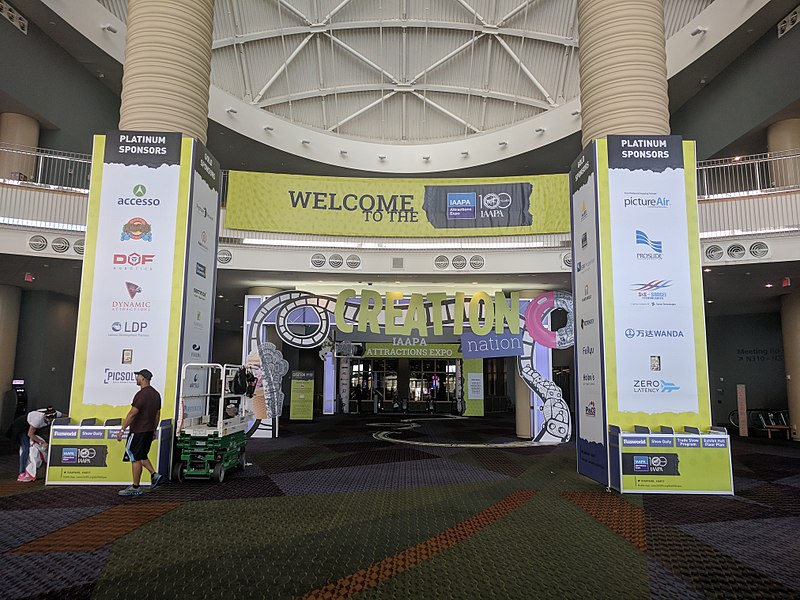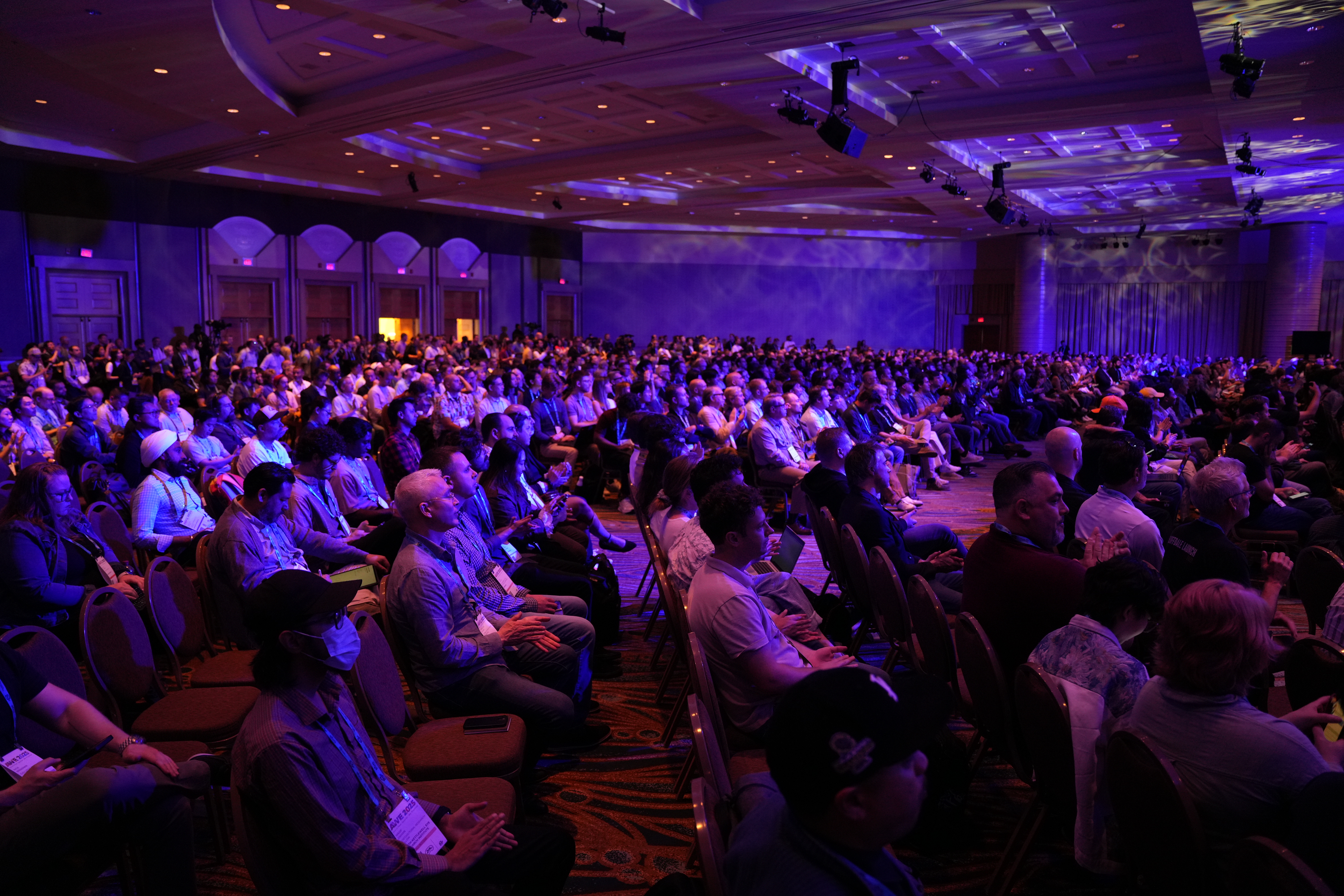When it comes to economics in the short run, will AR kill VR?
By Paul Rock, Industry Analyst focused on VR/AR for out-of-home entertainment*
I recently attended the annual conference for the International Association of Amusement Parks and Attractions (IAAPA) in Orlando. Location-based VR had a big footprint with 80 experiences dedicated to Virtual Reality. Headset-based AR experiences at IAAPA were very few. There were over 1,100 exhibitors at IAAPA. If there were 11 headset-based experiences demoing at IAAPA that would mean only 1% of exhibitors had a HoloLens, Magic Leap, or other headset AR experience. Unfortunately, the chances of seeing an exhibitor showcasing an AR-based headset experience at IAAPA was 0 out of 1,100. Microsoft HoloLens and Magic Leap had virtually no presence at IAAPA. Fortunately, despite no AR headsets being present, there were many non-headset AR experiences at IAAPA.
Ostensibly, there is no reason to assume that Microsoft and Magic Leap are bullish on location-based AR. This would be a huge disappointment as I definitely see there are ways that Magic Leap and Hololens could create experiences that wouldn't be possible to replicate at home, that would only be suitable for out-of-home entertainment. There doesn’t seem to be any serious competition for location-based entertainment Hololens or Magic Leap experiences. AR developers might want to take advantage of this opportunity before the rat race begins.
However, for those who consider anything that involves image overlays, Kinect-style motion-sensing, etc. in the AR category, there was plenty of impressive AR to be seen at IAAPA--everything from AR batting ranges and golf ranges, AR rock climbing walls, AR badminton, AR trampoline experiences, hologram-based tabletop games, etc. The top AR experiences, however, weren't that immersive.
That doesn't mean that AR has less economic value, especially when considering the following points comparing AR to VR: AR experiences tend to be significantly less expensive. The most expensive AR experience I saw was $75,000 and the second most expensive was $45,000 while requiring little to no labor to set up. I saw over 10 VR experiences above $50,000 and a few above $100,000. There were a few VR experiences that claimed to have the economic value of being “attendant-free," meaning it would require no labor to operate or monitor the VR experience. Unfortunately, all the “attendant-free” VR experiences were priced above $30,000. In that case, it might make more sense just to pay a minimum-wage employee than pay $30,000 - $45,000 for an “attendant-free” VR station.
I would like to highlight that as a buyer I am more hesitant about buying VR experiences that have expensive and fancy peripherals related to haptics, vibrating floors, etc. The main reason is that in too many cases I went to visit companies' booths with these types of experiences only to be told that the product wasn't working and to come back later. I worry that if I were to invest in such an experience, I would frequently have to tell customers that the product isn’t working. If the product has no attendant as a selling point, make sure that it costs under $10,000.
I normally like to keep my articles focused on one specific topic and not overwhelm readers with too much information in one article; however, my key takeaway from attending IAAPA is that VR, in order to compete against non-headset-based AR experiences, needs to come up with a better pricing strategy.
As a buyer of location-based entertainment products related to VR/AR I see that VR has severe competition with AR. In addition to being more expensive, it also appears less profitable, which is why as a buyer my company is seeking VR experiences that can serve as key attractions for our center and generate publicity. VR really needs to find significant ways of competing against AR in regards to price, and it has to be more than mere efficiency to bring that price down. My advice to VR sellers:
- Have an option for selling just the software or content license. Many companies try to sell all-in-one solutions where customers must buy the VR-ready computers, the headsets, etc. Create a checklist for customers to set up the hardware and other physical requirements on their own.
- Find ways to sell at a higher volume with lower margins as opposed to low volume and high margins.
- Find solutions for revenue-split to help bring down or completely remove upfront cost for prospective customers.
There should be financing models or rental models for VR experiences above $20,000. As buyers, we are more conservative and hesitant to buy products outright if they're above $10,000, especially due to fear that the technology might quickly become outdated or the product won't resonate with consumers as expected. For example, Zero Latency wasn’t at IAAPA this year unlike the previous 2 years. They sell a VR free-roaming experience that is above $500,000. Now, there are quality free-roaming experiences that are powered simply by Vive Pro that sell under $50,000 with the main cost going to software licensing.
VR might be 10 times more immersive than AR; however, it's often 10 times more expensive without any obvious benefit of generating more revenue and with a greater likelihood of not working when needed. I saw only two AR experiences at IAAPA for which I felt I would have to work out a rental or leasing model. 50% of the VR content at the show, on the other hand, would require a licensing or rental model for me to want to invest.
*Paul Rock is an analyst and entrepreneur focused on the LBE (Location Based Entertainment) sector for Virtual Reality and Augmented Reality. He has traveled across 10 countries and 4 continents doing hands-on research related to VR/AR for the LBE sector. He is also the Organizer for the Los Angeles chapter of AWE Nite LA. For matters relating to consulting, speaking opportunities, or other matters, he can be reached at info@anotherreality.com.



